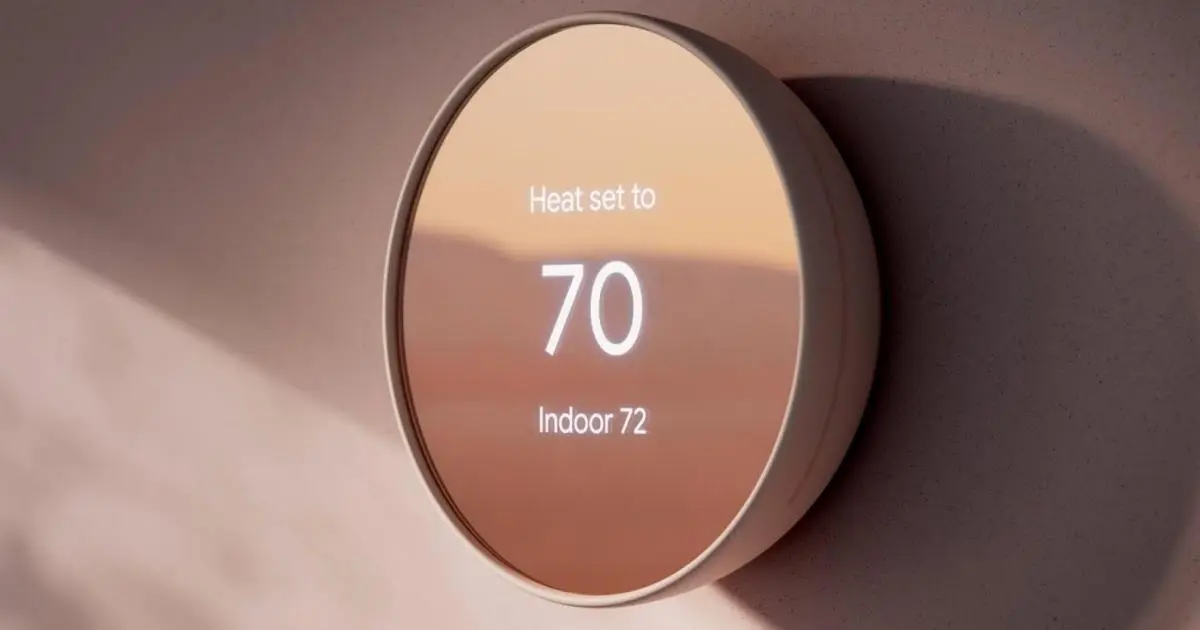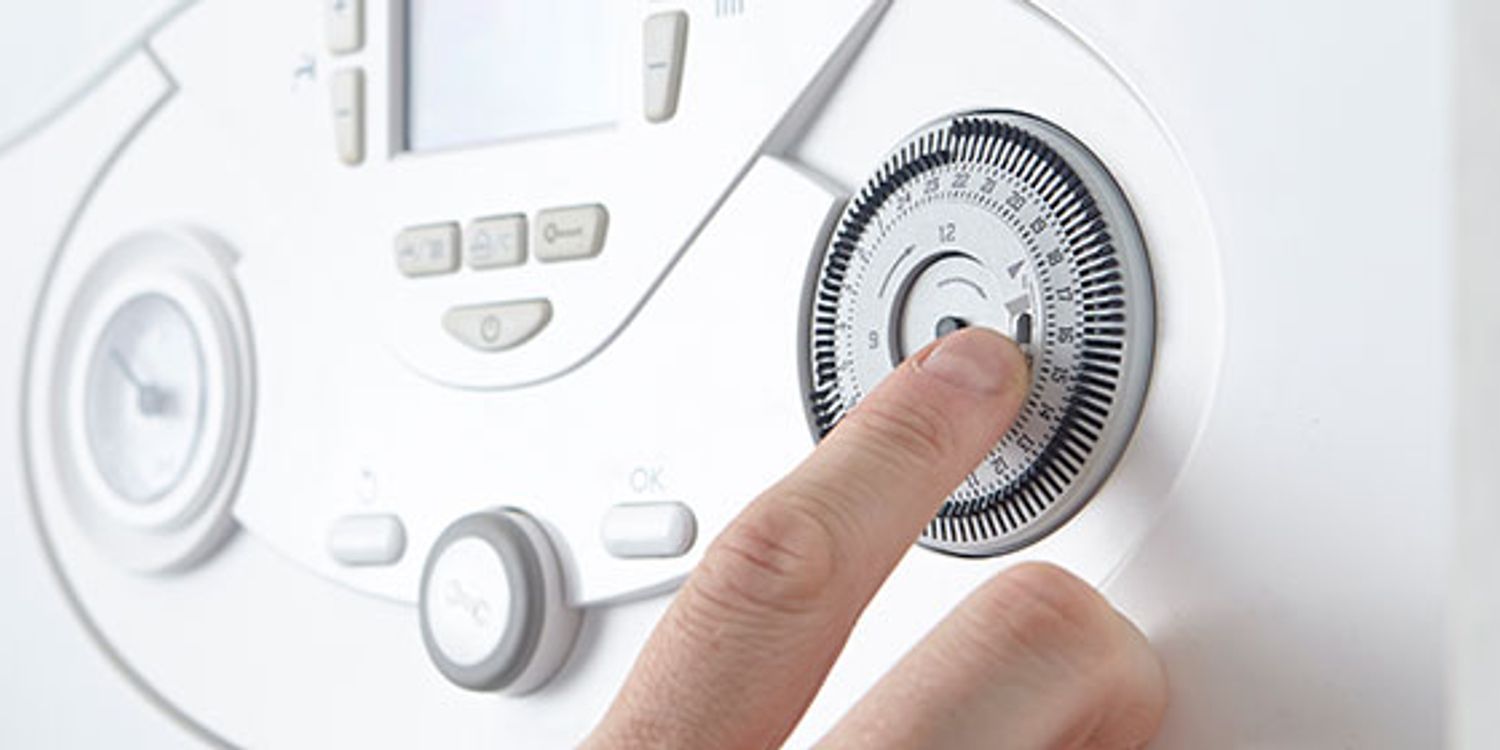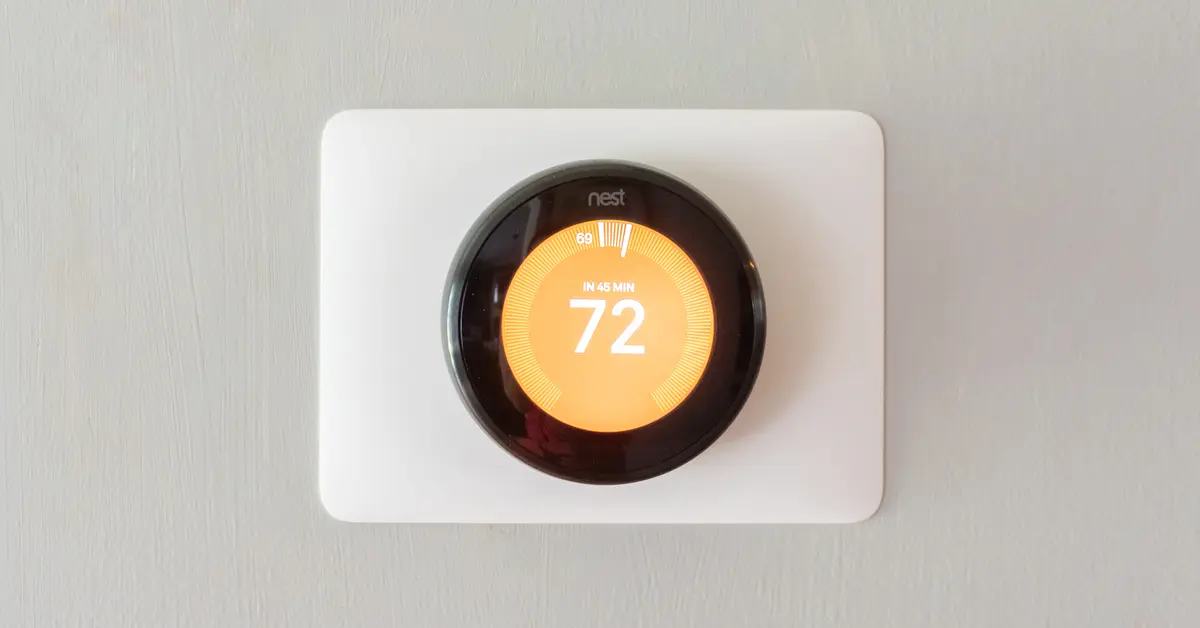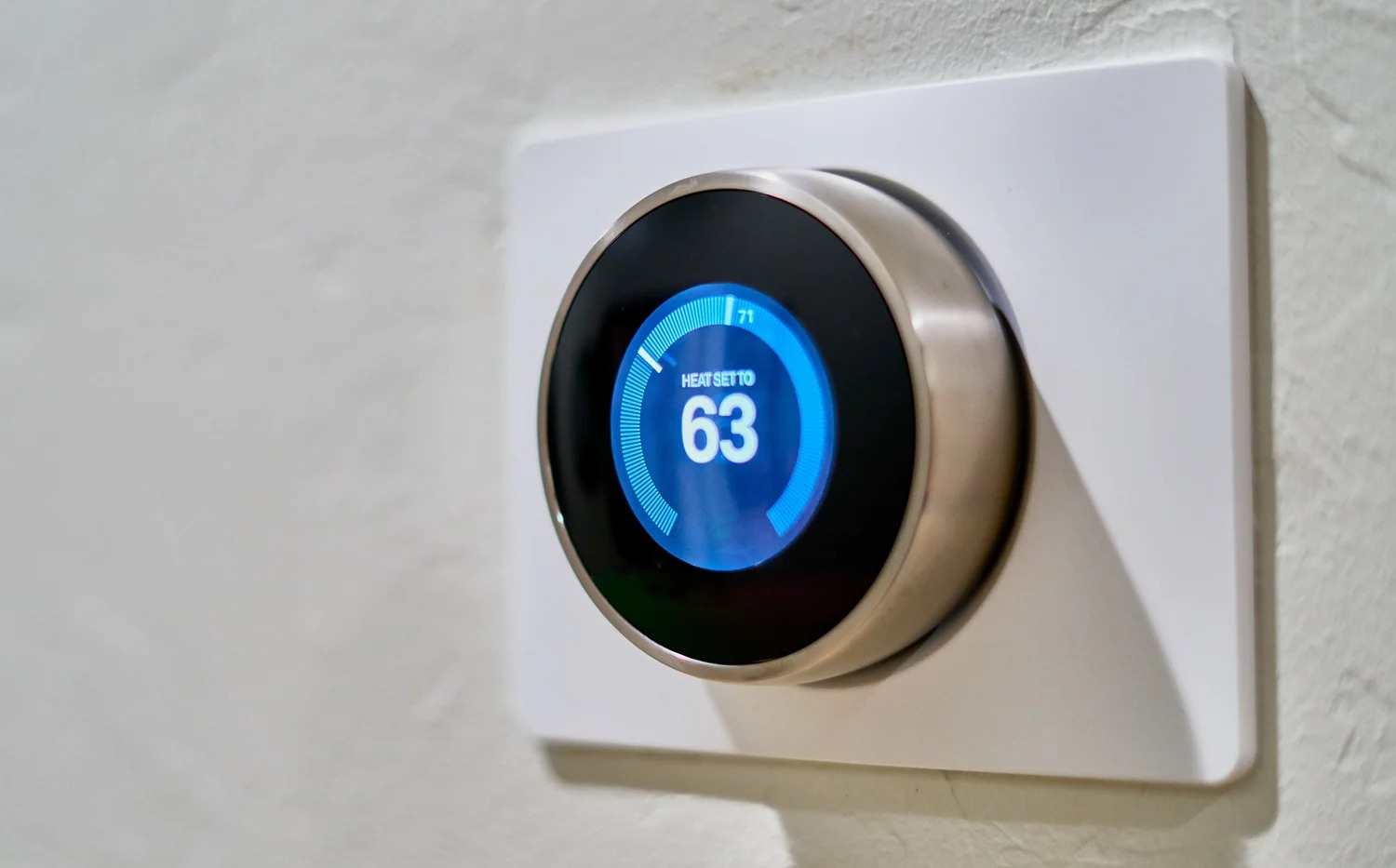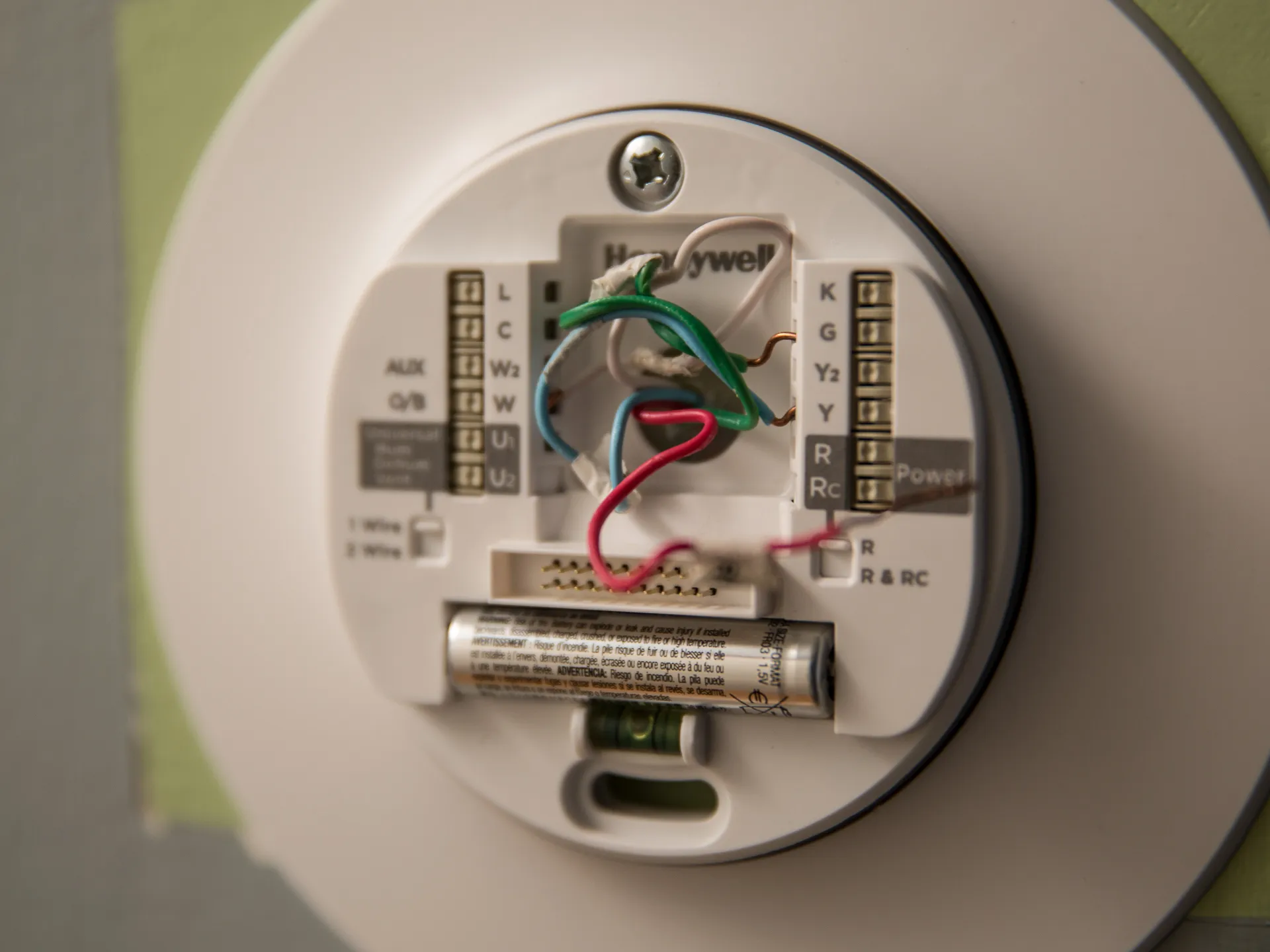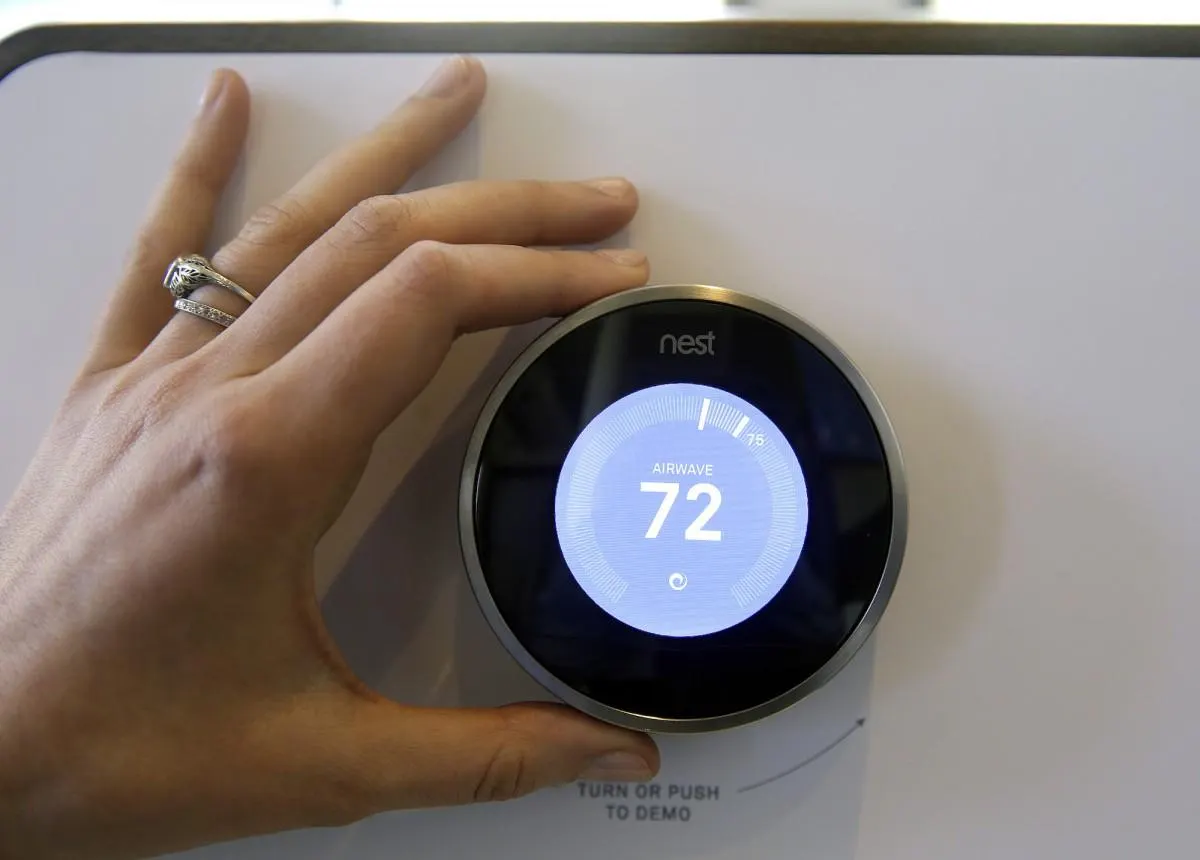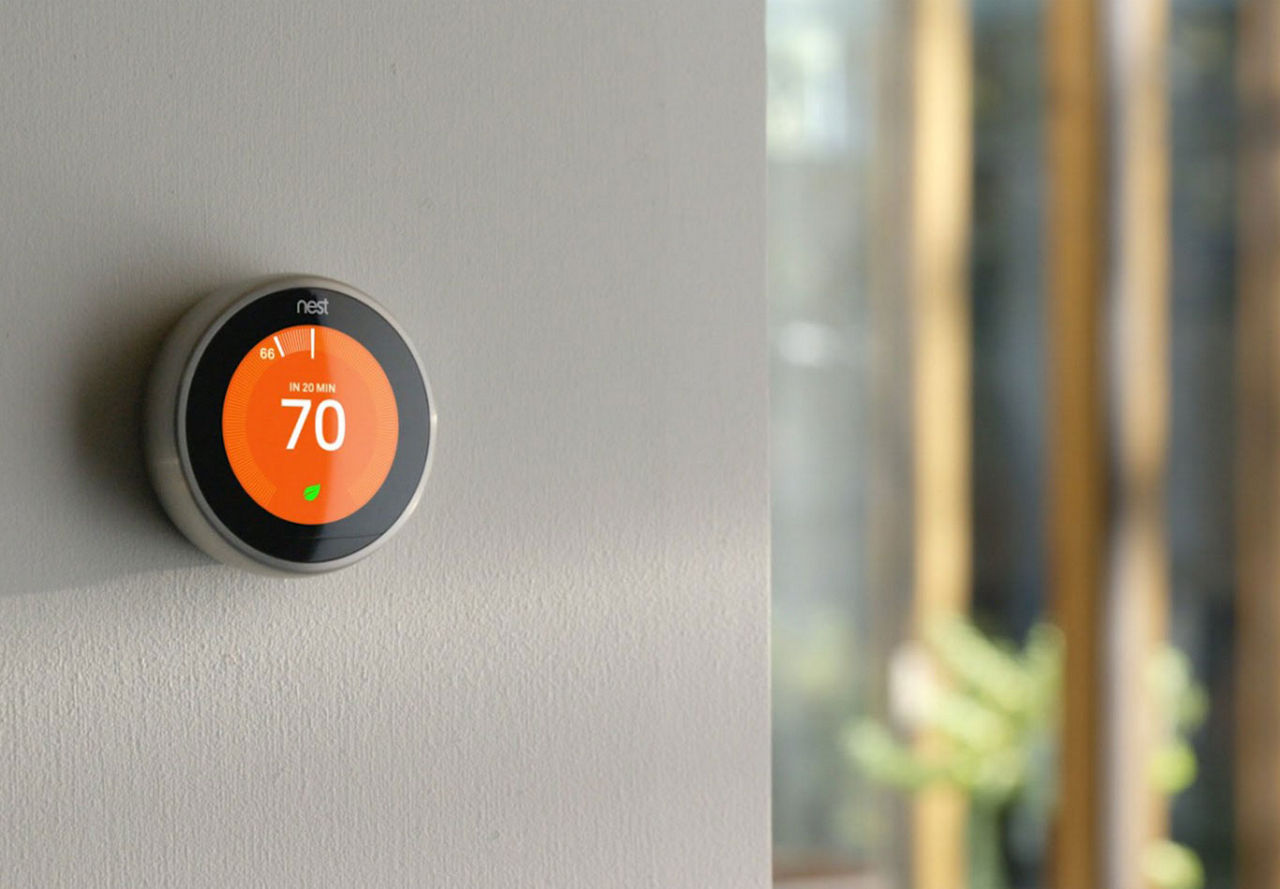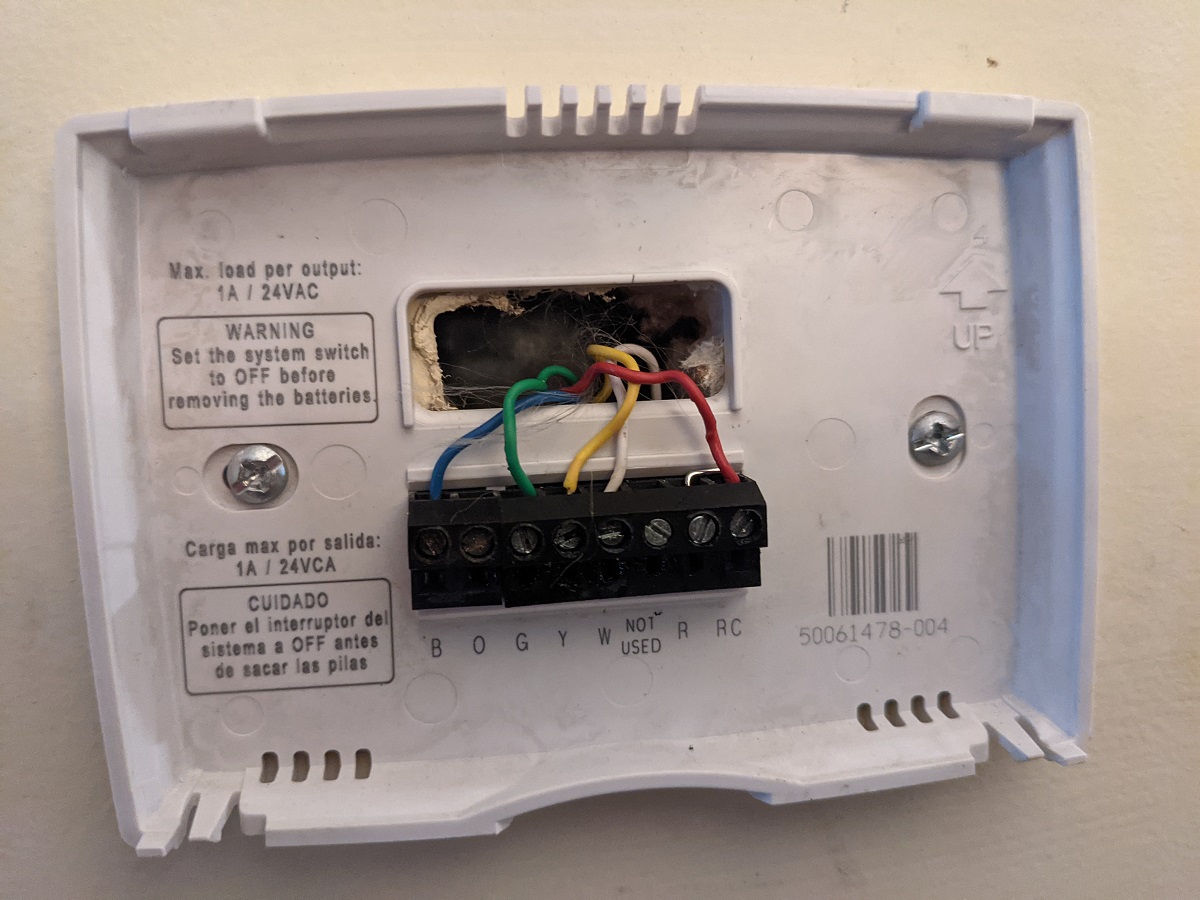What Is a Smart Thermostat?
A smart thermostat is a device that helps regulate and control the temperature of a home or office environment by connecting to the internet and integrating with other smart home devices. Unlike traditional thermostats that require manual adjustment, smart thermostats offer advanced features and automation options, allowing for more efficient and convenient temperature control.
Smart thermostats utilize sensors and algorithms to learn and adapt to the homeowner’s preferences and schedule, ensuring optimal temperature settings while maximizing energy efficiency. These devices offer a range of benefits, making them an increasingly popular choice among homeowners looking to upgrade their HVAC systems.
One of the primary advantages of a smart thermostat is the ability to control the temperature remotely. With a companion mobile app, users can adjust the thermostat settings from anywhere using their smartphone or tablet. This means you can preheat or cool your home before you arrive or adjust the temperature while away on vacation, providing comfort and energy savings.
In addition to remote control, smart thermostats often have built-in sensors that monitor occupancy, humidity levels, and even outdoor weather conditions. By analyzing this information, they can make automatic adjustments to create an ideal indoor climate while optimizing energy usage.
Furthermore, smart thermostats typically offer programmable scheduling options, allowing users to set different temperature preferences for different times of the day or week. This feature ensures that heating or cooling is only activated when needed, preventing energy wastage when the space is unoccupied. Some models even have advanced learning capabilities and can create personalized schedules based on observed patterns and user feedback.
Another key feature of smart thermostats is their compatibility with other smart home devices. Through integration with platforms like Amazon Alexa, Google Assistant, or Apple HomeKit, users can control the thermostat using voice commands, further enhancing convenience and hands-free operation.
Overall, a smart thermostat offers greater control, energy efficiency, and flexibility compared to traditional thermostats. With their intelligent features and connectivity, they provide a modern and eco-friendly solution for managing indoor temperature and comfort.
How Does a Smart Thermostat Work?
A smart thermostat operates using a combination of sensors, algorithms, and internet connectivity to regulate and control the temperature of a home or office environment. It is designed to learn and adapt to the user’s preferences and schedule, providing efficient and personalized temperature control.
The core functionality of a smart thermostat lies in its ability to communicate with the HVAC (Heating, Ventilation, and Air Conditioning) system and collect data from various sensors. These sensors monitor parameters such as temperature, humidity, motion, and occupancy, providing real-time information to the thermostat.
Using this data, the smart thermostat employs advanced algorithms to analyze and understand the user’s behavior and preferences. It learns the preferred temperature settings for different times of the day and days of the week, taking into account factors like occupancy patterns and weather conditions.
Smart thermostats often provide the option to create customized schedules or utilize pre-programmed settings based on energy-saving recommendations. This allows users to optimize their heating and cooling systems while minimizing energy consumption.
One of the key features of smart thermostats is their connectivity to the internet. By connecting to a Wi-Fi network, the thermostat can be accessed and controlled remotely through a companion mobile app or web interface. This enables users to adjust the temperature settings from anywhere, providing convenience and flexibility.
Furthermore, smart thermostats can often integrate with other smart home devices, such as motion sensors, smart lights, and door/window sensors. These integrations allow for a more comprehensive understanding of occupancy patterns and enable the thermostat to adjust temperature settings accordingly.
In some cases, smart thermostats can even monitor external factors like weather conditions. By accessing online weather data, they can anticipate changes in temperature or humidity and make proactive adjustments to maintain a comfortable indoor environment.
Overall, the workings of a smart thermostat involve a combination of data collection, analysis, and connectivity. By leveraging advanced technology and algorithms, they provide intelligent temperature control to enhance comfort, convenience, and energy efficiency in residential and commercial spaces.
Benefits of Using a Smart Thermostat
Using a smart thermostat offers numerous benefits for homeowners, providing convenience, energy savings, and enhanced comfort. Here are some of the key advantages of incorporating a smart thermostat into your HVAC system:
- Energy savings: One of the primary benefits of a smart thermostat is its ability to optimize energy usage. By analyzing occupancy patterns and taking into account the weather conditions, a smart thermostat can adjust temperature settings automatically. This not only maintains a comfortable environment but also ensures that energy is not wasted when the space is unoccupied.
- Cost efficiency: With its energy-saving capabilities, a smart thermostat can lead to significant cost reductions on monthly utility bills. By ensuring that your HVAC system operates efficiently and only when needed, you can minimize energy waste and lower your energy expenses over time.
- Convenience and remote access: Smart thermostats enable remote control and monitoring of temperature settings through mobile apps or web interfaces. This means you can adjust the thermostat settings from anywhere using your smartphone or tablet. You can preheat or cool your home before arriving, or make changes while away on vacation, ensuring a comfortable living space whenever you need it.
- Customized scheduling: Smart thermostats allow users to create customized schedules tailored to their routines. You can set different temperature preferences for different times of the day or days of the week. This feature ensures that the temperature is optimized for comfort while saving energy during periods of lower occupancy.
- Learning capabilities: Many smart thermostats possess advanced learning capabilities. They can analyze your temperature preferences and occupancy patterns over time to create personalized schedules automatically. This learning process results in optimal temperature settings without requiring manual adjustment.
- Integration with other smart home devices: Smart thermostats can integrate with other smart home devices, such as voice assistants, motion sensors, and smart lights. This allows for seamless automation and control through voice commands or sensor-triggered events. For example, the thermostat can adjust the temperature when it detects motion in a specific room or when you say, “Hey Google, make it warmer.”
By leveraging these benefits, a smart thermostat enhances your overall comfort, saves energy, and streamlines temperature control in your home or office environment.
Features and Functions of Smart Thermostats
Smart thermostats come equipped with a range of features and functions that enhance their capabilities and allow for efficient temperature control. Here are some of the key features commonly found in smart thermostats:
- Remote control: Most smart thermostats come with a companion mobile app or web interface that allows users to control and monitor the thermostat remotely. This feature enables users to adjust temperature settings from anywhere using their smartphone or tablet.
- Learning capabilities: Advanced smart thermostats can learn a user’s temperature preferences and occupancy patterns over time. They analyze data from various sensors to create personalized schedules that automatically adjust temperature settings for optimal comfort and energy efficiency.
- Sensor integration: Smart thermostats often integrate with other sensors, such as motion sensors or window/door sensors. This integration allows the thermostat to determine occupancy patterns and adjust temperature settings accordingly. For example, the thermostat can lower the temperature when it detects that no one is present in a room.
- Energy usage monitoring: With energy consumption monitoring, smart thermostats provide insights into how much energy is being used for heating or cooling purposes. Some models even display the estimated cost of energy usage, empowering users to make more informed decisions about their energy consumption.
- Weather integration: Many smart thermostats have the ability to connect to online weather services. By accessing weather data, the thermostat can adjust temperature settings based on current weather conditions, ensuring optimal comfort indoors.
- Compatibility with voice assistants: Smart thermostats can integrate with popular voice assistants like Amazon Alexa, Google Assistant, or Apple Siri. This allows users to control the thermostat using voice commands for hands-free operation and seamless integration with other smart home devices.
- Programmable scheduling: Smart thermostats offer programmable scheduling options, allowing users to set different temperature preferences for different times of the day or week. This feature ensures that heating or cooling is activated only when needed, reducing energy waste.
- Smart home integration: Many smart thermostats can integrate with other smart home devices and systems. This enables cohesive automation, where lighting, security, and other systems can interact with the thermostat to optimize comfort and energy efficiency.
These features and functions make smart thermostats versatile and user-friendly, providing advanced temperature control options for a more comfortable and energy-efficient home or office environment.
Different Types of Smart Thermostats
Smart thermostats come in various types, each offering unique features and functionalities to suit different user needs and HVAC systems. Here are some of the common types of smart thermostats available:
- Wi-Fi-enabled thermostats: These thermostats connect to your home’s Wi-Fi network, allowing for remote access and control through a companion mobile app or web interface. They offer features like scheduling, energy usage monitoring, and integration with other smart home devices.
- Learning thermostats: Learning thermostats are equipped with advanced algorithms that learn your temperature preferences and occupancy patterns over time. They automatically create personalized schedules, adjusting temperature settings for optimal comfort and energy efficiency without requiring manual input.
- Geofencing thermostats: Geofencing thermostats utilize your smartphone’s GPS to determine your location. They can automatically adjust temperature settings based on whether you’re home or away. For example, when you leave, the thermostat can set the temperature back to an energy-saving level, and when you return, it can bring the temperature back to your preferred setting.
- Zoned thermostats: Zoned thermostats are designed to control heating and cooling in specific zones or areas of your home independently. They use multiple thermostats and dampers to regulate temperature individually in different zones, allowing for customized comfort and energy savings by only heating or cooling the occupied areas.
- Smart room thermostats: Smart room thermostats are typically used in multi-room heating or cooling systems. They are installed in individual rooms and allow for precise temperature control in each room separately. Smart room thermostats often integrate with zoning systems or central control units.
- Line voltage thermostats: Line voltage thermostats are specifically designed for high voltage heating systems, such as baseboard heaters or radiant floor heating. They can handle higher electrical loads than standard low voltage thermostats and provide advanced control features.
- Programmable thermostats: Programmable thermostats allow users to set customized temperature schedules for different times of the day or week. They offer energy-saving options by adjusting temperature settings when the space is unoccupied, helping to reduce energy waste.
- Non-programmable smart thermostats: Non-programmable smart thermostats provide basic smart features such as remote control, energy usage monitoring, and compatibility with smart home systems. These thermostats offer more convenience compared to traditional non-programmable models.
Each type of smart thermostat caters to different requirements and HVAC setups. Consider your specific needs and consult with a professional to determine which type of smart thermostat is best suited for your home or office.
Factors to Consider When Choosing a Smart Thermostat
When selecting a smart thermostat for your home or office, it’s essential to consider various factors to ensure you choose the right one that meets your needs. Here are some key factors to consider:
- Compatibility: Ensure that the smart thermostat you choose is compatible with your HVAC system. Check the thermostat’s specifications to verify compatibility with your heating and cooling equipment, such as furnaces, heat pumps, or boilers.
- Features and Functions: Assess the specific features and functions offered by the smart thermostat. Consider aspects such as remote access, learning capabilities, scheduling options, and integration with other smart home devices. Determine which features are most important for your lifestyle and requirements.
- User Interface: Evaluate the user interface of the smart thermostat. Ensure that it is intuitive, easy to navigate, and provides a clear display of relevant information. Some thermostats offer touchscreens, while others utilize companion mobile apps for control and monitoring.
- Installation: Consider the ease of installation. Some smart thermostats require professional installation, while others offer a do-it-yourself option. Assess your comfort level with installation requirements and consult product manuals or videos to determine if it’s a suitable choice for you.
- Energy Efficiency: Look for energy-saving features that can help reduce your utility bills. Features like occupancy sensing, learning capabilities, and scheduling options can optimize energy usage and prevent wasteful heating or cooling when it’s not needed.
- Budget: Set a budget and consider the price of the smart thermostat, keeping in mind any additional costs such as installation fees or compatibility accessories. Remember that investing in an energy-efficient smart thermostat can lead to long-term cost savings through reduced energy consumption.
- Brand Reputation: Research and consider the reputation of the smart thermostat brand. Look for customer reviews, ratings, and feedback to ensure the product is reliable and backed by good customer support.
- Smart Home Integration: If you already have other smart home devices, consider a smart thermostat that integrates well with your existing ecosystem. Compatibility with voice assistants, smart speakers, or automation platforms can enhance the overall functionality and convenience of your smart home setup.
By considering these factors, you can make an informed decision when choosing a smart thermostat that aligns with your HVAC system, preferences, and budget. Take the time to research and compare options to ensure you find the best fit for your needs.
Installation and Setup of a Smart Thermostat
The installation and setup process of a smart thermostat may vary depending on the specific model and your HVAC system. However, here is a general overview of the steps involved:
- Turn off the power: Begin by turning off the power to your HVAC system at the circuit breaker. This ensures a safe installation process without the risk of electrical shock.
- Remove the old thermostat: Remove the cover of your old thermostat and detach it from the wall. Take note of the existing wiring connections and label them for reference during the installation of the new smart thermostat.
- Mount the new thermostat: Follow the manufacturer’s instructions to mount the new smart thermostat on the wall. Ensure that it is level and securely attached.
- Connect the wires: Connect the wiring from your HVAC system to the corresponding terminals on the smart thermostat. Some models may use color-coded labels, while others require custom labeling based on your existing wiring configuration.
- Power up the thermostat: Once the wiring is connected, restore power to your HVAC system by turning on the circuit breaker. The smart thermostat will power up and guide you through the setup process on the display or through the companion mobile app.
- Configure settings: Use the smart thermostat’s setup wizard to configure settings such as Wi-Fi connection, language preference, and system type. Follow the prompts and enter the necessary information to complete the setup process.
- Connect to the network: Connect the smart thermostat to your home’s Wi-Fi network. This allows for remote control and access through the companion mobile app or web interface.
- Set up schedules and preferences: Take advantage of the smart thermostat’s features to set up personalized schedules and temperature preferences. Adjust settings according to your daily routines and desired comfort levels.
- Test the thermostat: After completing the setup, test the thermostat to ensure it is functioning correctly. Adjust the temperature settings and verify that your HVAC system responds accordingly.
- Learn and optimize: Allow your smart thermostat to learn your preferences and occupancy patterns over time. Some models have learning capabilities that adjust settings automatically based on your behavior and feedback.
If you are uncomfortable with the installation process or have a complex HVAC system, it is recommended to seek professional assistance from an HVAC technician or an electrician. They can ensure a correct and safe installation of your smart thermostat.
Refer to the manufacturer’s specific instructions and documentation for detailed guidance on the installation and setup process of your smart thermostat. Following these steps will allow you to enjoy the benefits of a smart, energy-efficient, and convenient temperature control system in your home or office.
Setting Up Schedules and Preferences
One of the key features of a smart thermostat is the ability to set up personalized schedules and temperature preferences. By customizing these settings, you can optimize comfort while maximizing energy efficiency. Here are the steps to set up schedules and preferences on your smart thermostat:
- Access the thermostat settings: Use the thermostat’s display or companion mobile app to access the settings menu. Look for options related to scheduling and preferences.
- Create a schedule: Select the days of the week or specific time slots when you want the thermostat to adjust the temperature. For example, you might want to lower the temperature during the night or when no one is home.
- Set temperature preferences: Specify the desired temperature during different periods of the day. Determine the temperature you find most comfortable in the morning, daytime, evening, and night. Some thermostats offer additional options, such as eco mode or energy-saving settings.
- Modify settings for different days: If your schedule varies from day to day, take advantage of the thermostat’s flexibility to program different preferences for different days or switch between weekday and weekend modes.
- Allow for setbacks and overrides: Consider allowing setbacks or temporary overrides for unexpected changes in your routine. This ensures flexibility if you want to adjust the temperature outside of the programmed schedule, such as when hosting guests or coming home earlier than usual.
- Utilize learning capabilities: Some smart thermostats have learning capabilities that can observe your temperature adjustments and occupancy patterns over time. These thermostats adapt and optimize the schedules automatically, providing personalized comfort without the need for constant adjustments.
- Integrate with other devices: If you have other smart home devices, explore integration options with your smart thermostat. For example, you can coordinate lighting and HVAC settings to enhance energy efficiency and create a more comfortable environment.
- Monitor and adjust: Regularly monitor and evaluate the effectiveness of your schedules and preferences. Make adjustments as needed to optimize comfort, energy efficiency, and cost savings.
Remember that the steps and available options may vary depending on the specific model and brand of your smart thermostat. Refer to the manufacturer’s instructions and documentation for detailed guidance on setting up schedules and preferences for your particular device.
By taking the time to tailor your smart thermostat’s settings to your lifestyle and preferences, you can enjoy a comfortable environment while maximizing energy efficiency and cost savings.
Integrating a Smart Thermostat with Other Smart Home Devices
One of the advantages of a smart thermostat is its ability to integrate seamlessly with other smart home devices, allowing for enhanced automation and control. Integrating your smart thermostat with other devices can offer added convenience, energy savings, and customization. Here are some ways to integrate your smart thermostat with other smart home devices:
- Voice assistants: Connect your smart thermostat with popular voice assistants like Amazon Alexa, Google Assistant, or Apple Siri. This integration allows you to control the thermostat using voice commands, making temperature adjustments hands-free and effortless.
- Motion sensors and occupancy detectors: Integrate your smart thermostat with motion sensors or occupancy detectors. When the sensors detect movement in a room, they can signal the thermostat to adjust the temperature accordingly, ensuring comfort and energy efficiency in occupied areas.
- Smart lighting: Coordinate your smart thermostat with smart lighting systems. For example, you can set the thermostat to adjust the temperature when the lights are turned on or off to match occupancy patterns. This integration helps optimize both lighting and HVAC energy usage.
- Door and window sensors: Link your smart thermostat with door and window sensors. When a door or window is opened, the sensors can communicate with the thermostat to adjust the temperature to conserve energy while maintaining comfort. This integration is particularly useful in maintaining energy efficiency during periods of ventilation or when windows are left open.
- Weather services: Integrate your smart thermostat with online weather services to receive real-time weather data. The thermostat can then adjust temperature settings based on the weather conditions, ensuring optimal comfort and energy efficiency indoors.
- Security systems: Connect your smart thermostat to your home security system. For example, when the security system is set to “away” mode, the thermostat can adjust the temperature to an energy-saving setting. This integration provides additional energy efficiency and peace of mind.
- Smart blinds or shades: Coordinate your smart thermostat with automated blinds or shades. When the thermostat detects a change in temperature or sunlight, it can communicate with the blinds or shades to adjust light and heat levels, optimizing energy efficiency and maintaining a comfortable indoor environment.
Before integrating your smart thermostat with other devices, ensure that they are compatible and can communicate with each other. Check for compatibility information and instructions provided by the manufacturers of both the smart thermostat and the other smart home devices.
By integrating your smart thermostat with other smart home devices, you can create a cohesive and efficient automation system that enhances comfort, convenience, and energy savings in your home.
Energy Savings and Cost Efficiency with Smart Thermostats
Smart thermostats offer significant energy savings and cost efficiency compared to traditional thermostats. By utilizing advanced features and automation, smart thermostats help optimize temperature control and improve energy management in your home or office. Here are some ways smart thermostats contribute to energy savings and cost efficiency:
- Optimized scheduling: Smart thermostats allow you to create customized schedules based on your daily routines. By heating or cooling your space only when needed, you can avoid energy waste during unoccupied periods and reduce your heating and cooling costs.
- Learning capabilities: Many smart thermostats have learning capabilities, which means they can adapt to your temperature preferences and occupancy patterns over time. As they learn your behavior, they adjust the temperature settings automatically, maximizing comfort and energy efficiency without requiring frequent manual adjustments.
- Remote access and control: With remote access through a mobile app or web interface, you can control your smart thermostat from anywhere. This allows you to adjust temperature settings when you’re away from home, ensuring that energy is not wasted by maintaining unnecessary heating or cooling.
- Occupancy sensors: Smart thermostats equipped with occupancy sensors can detect when a room is unoccupied and adjust the temperature accordingly. This feature prevents energy waste by reducing heating or cooling in unused areas, ensuring that energy is focused on occupied spaces.
- Weather integration: Some smart thermostats can access weather data and adjust temperature settings based on current weather conditions. By taking into account factors such as outdoor temperature and humidity, the thermostat can optimize energy usage and ensure a comfortable indoor environment without unnecessary heating or cooling.
- Energy usage monitoring: Many smart thermostats provide data on energy consumption, allowing you to monitor and track your heating and cooling usage. This information helps you identify inefficiencies and make more informed decisions regarding energy-saving practices, leading to cost reductions.
- Integration with other smart devices: By integrating your smart thermostat with other devices, such as motion sensors or smart lighting, you can create a more comprehensive automation system. This integration ensures that energy consumption aligns with occupancy and lighting needs, optimizing energy efficiency throughout your home.
- Temperature setbacks: Smart thermostats can automatically set back the temperature during periods of the day or night when lower heating or cooling is acceptable. This feature reduces energy usage during times when you’re typically sleeping or away, resulting in cost savings without sacrificing comfort.
Smart thermostats provide you with the tools and intelligence to make informed decisions about your energy usage and optimize temperature control. By maximizing energy efficiency, these devices help reduce your carbon footprint and lower your heating and cooling costs.
Common Concerns and Troubleshooting Tips for Smart Thermostats
While smart thermostats offer numerous benefits, it’s important to be aware of common concerns that might arise and troubleshooting tips to resolve them. Here are some common concerns and tips for troubleshooting smart thermostats:
- Connectivity issues: If your smart thermostat is experiencing connectivity issues, check your Wi-Fi network to ensure it is stable and functioning properly. Restarting your router or reestablishing the Wi-Fi connection on your thermostat can help resolve connectivity problems.
- Inaccurate temperature readings: If your smart thermostat is displaying inaccurate temperature readings, verify that it is installed correctly and not exposed to direct sunlight, drafts, or other sources of heat or cold that may affect its temperature reading. Additionally, check and calibrate the thermostat’s temperature sensors if necessary.
- Incorrect scheduling: If your smart thermostat is not following the programmed schedules or preferences, double-check that the schedules are correctly set up. Ensure that the mode (heating or cooling) is appropriately selected, and the temperature differentials are suitable for your HVAC system. Resetting the schedule or rebooting the thermostat might also resolve this issue.
- Battery or power issues: Some smart thermostats rely on batteries for power. If your thermostat is displaying a low battery indicator, replace the batteries as instructed by the manufacturer. For thermostat models that are hardwired, check the circuit breaker to ensure it hasn’t tripped, and verify that the thermostat is receiving power.
- Compatibility problems: If you are experiencing compatibility issues with your HVAC system, ensure that the smart thermostat is compatible with your specific system. Consult the manufacturer’s documentation or contact customer support for assistance. In some cases, professional installation or system modifications may be necessary.
- Unresponsive or frozen screen: If the touchscreen or display of your smart thermostat becomes unresponsive or frozen, try rebooting the thermostat by removing it from its base or resetting it through the companion mobile app. In some cases, a firmware update may be required to resolve this issue.
- Incorrect wiring: If you have recently installed or replaced your smart thermostat and are experiencing issues, review the wiring connections to ensure they are correct. Consult the thermostat’s installation manual or seek professional assistance to verify the wiring configuration.
- Insufficient cooling or heating: If your smart thermostat is not adequately cooling or heating the space, check the air filters and ensure they are clean. A dirty or clogged filter can restrict airflow and impact the performance of your HVAC system. If the issue persists, consult an HVAC professional to assess your system’s functionality.
If troubleshooting tips do not resolve the issues with your smart thermostat, contact the manufacturer’s customer support for further assistance. They can provide specific troubleshooting steps or guide you through any warranty or repair processes.
Remember to consult your smart thermostat’s user manual and follow the manufacturer’s instructions for troubleshooting and maintenance to ensure optimal performance and longevity of your device.
Conclusion
Smart thermostats have revolutionized temperature control by combining advanced technology, energy efficiency, and convenience. These devices offer a range of benefits, including remote access and control, personalized scheduling, energy savings, and integration with other smart home devices. By learning your preferences, adapting to your lifestyle, and utilizing sensors and algorithms, smart thermostats optimize your indoor comfort while minimizing energy consumption and cost.
When choosing a smart thermostat, consider factors such as compatibility with your HVAC system, desired features, ease of installation, and budget. By selecting the right model for your needs, you can take full advantage of the capabilities and enjoy a comfortable living space that is energy efficient and helps reduce environmental impact.
The installation and setup of a smart thermostat are straightforward, but it’s always recommended to follow the manufacturer’s instructions or seek professional assistance if needed. Setting up schedules and preferences allows for personalized temperature control and increased energy efficiency. Integrating your smart thermostat with other smart home devices enhances automation and convenience, providing a seamless and cohesive smart home experience.
While smart thermostats offer numerous benefits, it is important to address common concerns and troubleshoot any issues that may arise. By following troubleshooting tips or seeking assistance from customer support, you can resolve most problems and ensure optimal performance of your smart thermostat.
In conclusion, smart thermostats offer a modern and eco-friendly solution to temperature control. With their advanced features, energy-saving capabilities, and seamless integration with other smart home devices, they provide an enhanced level of comfort, convenience, and cost efficiency in your home or office.









